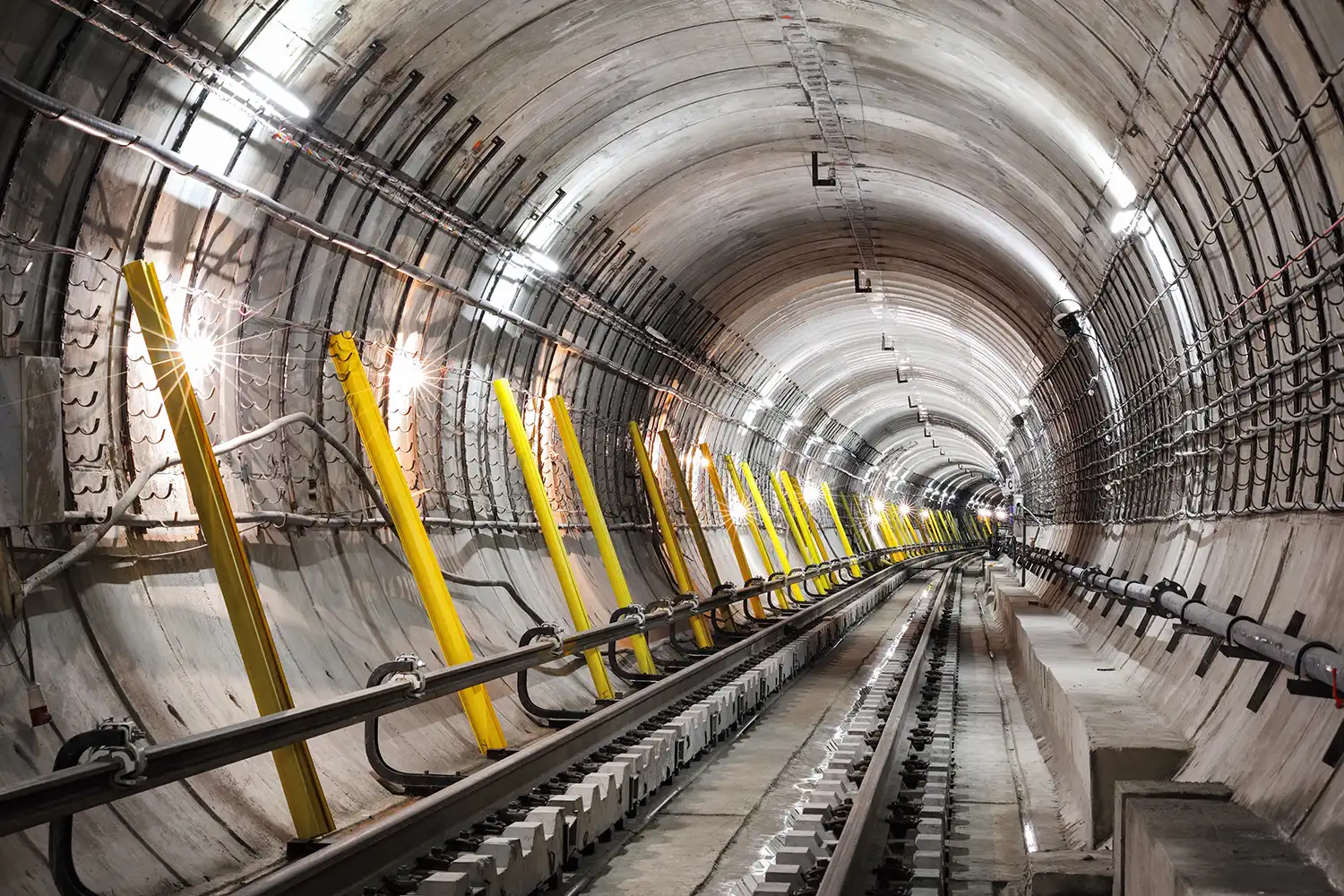India’s railways are changing: ambitious projects, undertaken across the country, are now transforming connectivity, as well as tourism. But a major step toward changing the way people would travel in the state of Uttarakhand would be the nearly completed longest railway tunnel by Indian Railways within the Char Dham Railway project. This project will enhance access to one of India’s most sacred pilgrimage circuits, Char Dham, and reduce travel time between key destinations by a significant margin.
Secondly, the project provides job opportunities for locals during and after construction, thereby promoting socio-economic growth. Through the combination of modern engineering and regional development, this railway project stands to revolutionize the connectivity of the state by opening up far-flung destinations and increasing both domestic and international tourism. Here is a closer look at the project and the impact it is set to have on the region.
The Rishikesh-Karnaprayag Rail Line: A Game-Changer for Uttarakhand
This New BG Rail Line between Rishikesh-Karnaprayag stands out to be one of the most ambitious projects of infrastructural work spread over 125.20 kilometers. It would mean an easily improved journey and experience for both natives and tourists. It will open up easy passage for people by providing a faster and efficient road linking far-flung locales and increasing tourism in a big way-for Char Dham among other destinations after its construction.
The rail line will, therefore, consist of both tunnels and bridges, uniquely designed for the Himalayan foothills’ tough and often dangerous terrain. The new railway line will reduce the time taken between Rishikesh and Karnaprayag from the present seven hours on road to mere two hours by train. This will not only save precious hours for the tourists but also cut costs enormously, making pilgrimage and traveling to this region accessible for everyone.
17 Tunnels and 35 Bridges: Hurdling through Himalayan Landscape
The Rishikesh-Karnaprayag rail line not only appears to be one of the magnificent engineering feats of the century but also indicates the resolute efforts put in by the Indian Railways to surmount the geographic obstacle of the mountains. A critical component for effective connectivity through such a rugged topography would involve the construction of 17 tunnels. Overall, the length of these 105 kilometers across the entire track will ensure continuous travel.
Of these, the longest one is being constructed between Devprayag and Lachmoli. It is 15.1 km long. This will be the longest railway tunnel in India and a landmark achievement in railway infrastructure. The Devprayag-Lachmoli tunnel will play a significant role in making sure that the railway line can bypass difficult hilly areas and remain on course. This tunnel is to be used in the passage of trains through the steep gradients of the region with travel times as low as possible.
Apart from the construction of tunnels, 35 bridges are also proposed to integrate the railway line more effectively into mountainous terrain. The bridges would help the railway line cross deep valleys and rivers in a safe way for the passage of trains. Both the bridges and tunnels have been very significant in ensuring the railway line safely navigates this treacherous Himalayan terrain and offers effective transportation to that region.
Advanced Technology to Mitigate Environmental Damage
Indian Railways has utilized advanced technology in the construction process. This is an integral part of modern infrastructure development. Tunnels and bridges are constructed, keeping the natural environment intact in a manner that ensures that the approach towards development with sustainability is achieved.
Cut-and-cover tunneling, mechanized tunneling, and controlled blasting are some of the innovative techniques utilized in the construction process. It is ensured that the environmental impact of the project remains minimal by employing such techniques. Further, it also tries not to disturb the local flora and fauna through keeping the security of the involved workers intact. Another interesting feature is that the project involves green technologies incorporated within the design of water conservation, waste management, and energy efficiency for it to adhere to the governmental vision of sustainable development.
The tunnel system offers safety measures during travel.
In all, the design of the safety of the Char Dham Railway Project has been placed in two distinguished parts, of which one has been for trains and the secondary safety tunnel if there were emergency cases. Designing the project in two distinguishable types of tunnels helps ensure there will always be a way out during emergency cases.
There will be cross-roads connecting the two tunnels at every 500 meters. So in case of any emergency, it would not be so difficult to reach both sides easily. All these safety measures are being adopted so that passengers and railway staff will be saved and now they can open this new railway line safely and efficiently. The project also features advanced state-of-the-art signaling and communication systems to monitor the health and status of the railway line so that it will be safer for the passengers traveling through the tunnels.
Benefits for Uttarakhand: Economic Growth and Enhanced Tourism
Now, the Rishikesh-Karnaprayag Rail Line will eventually bring developed benefits towards Uttarakhand, which are tourism and economic development. Now, five districts in the state will be benefited directly by this new railway line: Dehradun, Tehri Garhwal, Pauri Garhwal, Rudraprayag, and Chamoli. These districts house some of the important pilgrimage sites and, therefore, huge tourist inflow is expected.
The travelling time to the Char Dham circuit, which comprises temples of Yamunotri, Gangotri, Kedarnath, and Badrinath will reduce and introduce more pilgrims and tourists into the area. Easy access offered by the new rail line will boost religious tourism circuits, develop new circuits, gain local economies, and introduce businesses in hospitality, retail, and services.
With tourism in mind, the new railway line will also facilitate the movement of local residents of five districts to travel easily to parts of Uttarakhand and the nation. This enhances mobility, easy access to education and health care, and better quality of life for the people in such remote regions.
Impact on Char Dham Pilgrimage: A Boon for Devotees
The new railway line holds special significance for the devotees traveling to the temples in Char Dham. Char Dham Yatra is one of the most sacred pilgrimages in India and attracts millions of devotees in a calendar year. Arduous road journeys toward these temples have been a great hindrance for many elderly and sick people, and also those without private transport.
This railway line will, therefore, reduce the travel time significantly between Rishikesh and Karnaprayag. The journey will now be just two hours by train and devotees would not have to undertake long and tiring road journeys. This is going to make the Char Dham Yatra much more accessible and comfortable.
Revolutionizing Tourism in Uttarakhand
Consequently, the Char Dham Railway Project will alter the face of traveling to Uttarakhand. A modern, efficient and sustainable transport system through mountainous terrain for the state. While building 17 tunnels and 35 bridges between Rishikesh to Karnaprayag it also completes India’s longest railway tunnel streamlining travel and to further develop tourism.
Completion of one of the main infrastructural connectivity boosters for the state in the last stages of this Char Dham Railway Project will attract pilgrims, tourists, and residents towards the state of Uttarakhand. The project will also present a new model of railway construction based on India in the coming days for the merge of cutting-edge technology, environment-sensitive considerations, and safety with access to redefine travel in the coming days.







